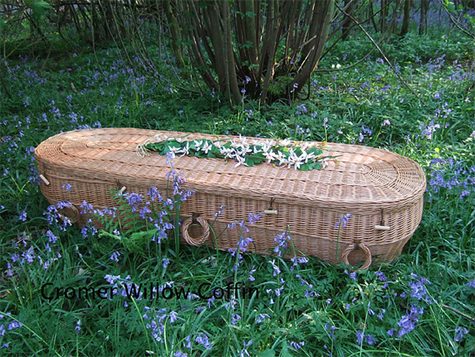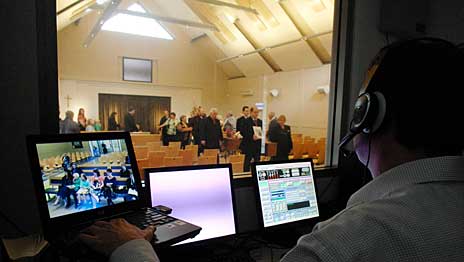4 Ways Funerals Are Changing
Imagine this: You walk into a memorial service and everyone is chugging beer, smoking and partying—including, seemingly, the deceased, who is posed at a table playing cards with a Busch in one hand and a cigarette in the other. This is not your ordinary funeral.
A recent study by Longwood University researchers Dr. Virginia Beard and Dr. William Burger looked at the way funerals are changing—and becoming more personalized.
Here are four ways their research showed the funeral home business is changing:
1. More personal touches.

Miriam Burbank of New Orleans had the elaborate funeral she wanted, complete with a cigarette in her hand and a can of Busch beer next to her.
[Photo by Fox6Now.com]Increasingly, families are moving away from traditional funerals and opting for a more personal approach to remembering loved ones.
“This is being driven by the baby boomers,” said Beard. “They are aging, and they want their funerals to reflect the way they lived their lives—very individualistic. That’s why we’re seeing caskets that look like footballs and [hearing] Bob Dylan playing over the speakers instead of a choir singing ‘Amazing Grace.’”
Sure, we’ve heard of the man who was buried sitting atop his Harley inside a plexiglass box. But more often, it’s people’s lifestyles that are reflected in their funeral plans. One can choose to forego embalming and be buried in an eco-friendly biodegradable casket in a preserved forest or be frozen and composted to return to the earth faster or simply be buried at sea.

Biodegradable coffins like this wicker one are an alternative way of burial favored by some conservationists. [Photo by thegreentimes.co.za] 2. More cremations.
Traditional burials have long been the most prevalent way of saying goodbye to loved ones. No longer.
In the last 25 years, the number of cremations in the U.S. has taken off and is projected to overtake the number of burials in the next few years. Currently, 47 percent of all funerals are cremations.
This trend may be due to cost, says Beard. “The average cremation costs much less than a traditional burial—sometimes as little as one-10th the price. For many families, it’s hard to find what can cost upwards of $12,000 to bury a family member.”
In addition, the rise of secularism—nearly 20 percent of Americans don’t identify with a religion—eliminates a factor in deciding between cremation and a traditional burial (long favored by Christian sects). And don’t discount the effects of conservationism, which often prompts people to ponder whether they want to take up valuable earth in a cemetery.
[Cremation photo by Shutterstock]
3. Ashes are customized as well.
If you’d like your ashes to reside in an urn that reflects your lifestyle, sure thing. From cowboy-boot to golf-ball-shaped urns, the options are unlimited. “At this point, it’s really a matter of what you can dream up,” said Beard. “Funeral homes are taking the attitude that, if the family wants something in particular, they make it happen.”
For the more adventurous, examples of ash disposal include trips to space and remains pressed into vinyl and set to music, compressed into a diamond or even mixed with paint and used to create a portrait of the deceased.
[Photo by memorial-urns.com]
4. They’re going digital.
As with everything today, funeral homes are turning to the digital world. Not only are they increasingly using technology to enhance their clients’ convenience—from planning services online to the production of funeral DVDs and online obituaries—technology is creeping into the services themselves. Webcasts broadcast funeral feeds to all corners of the earth—helpful for those with family all over the country—while increasingly families are purchasing caskets online and having them delivered to funeral homes.
Some funeral homes are pre-planning services, and custom slideshows, videos and online guest books or memorial pages are commonplace, said Beard.
[Photo by spectrum.ieee.org]
Continue reading →


